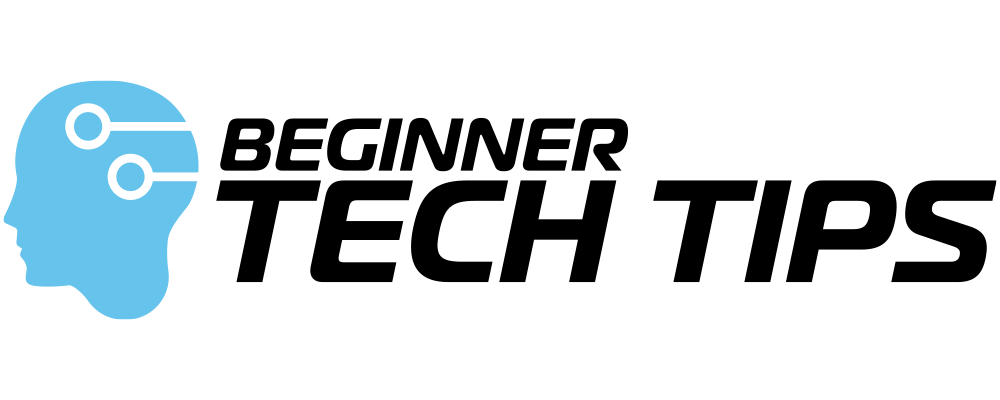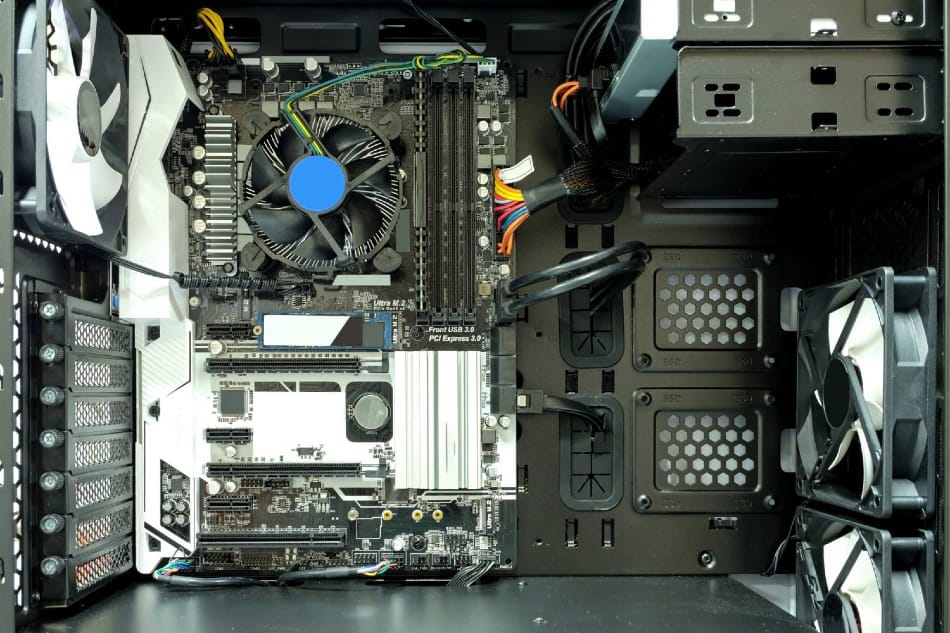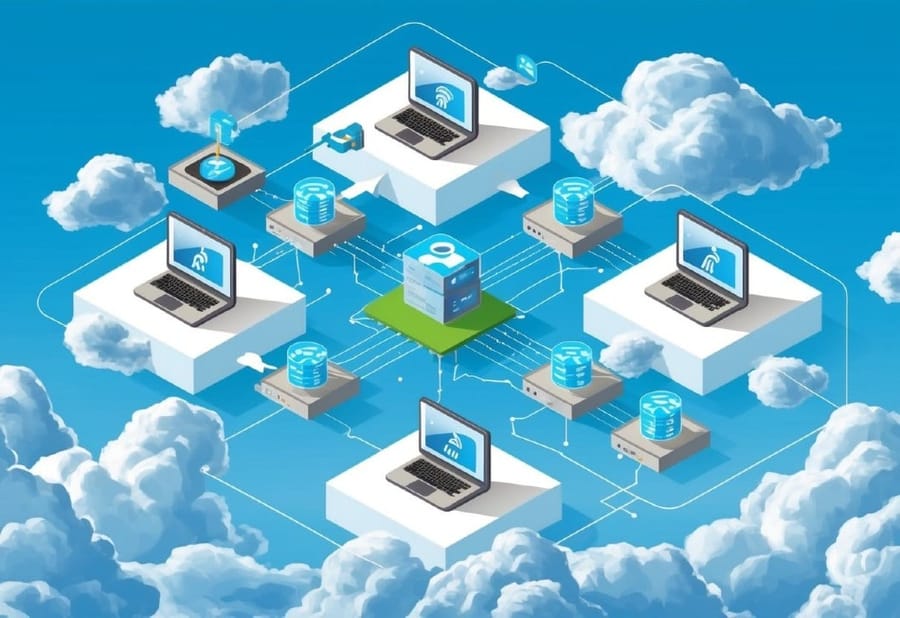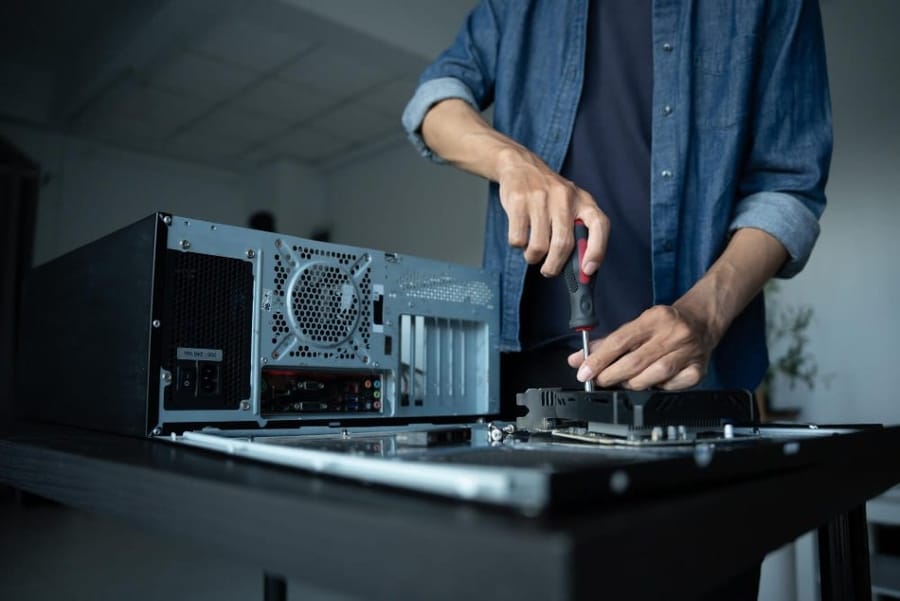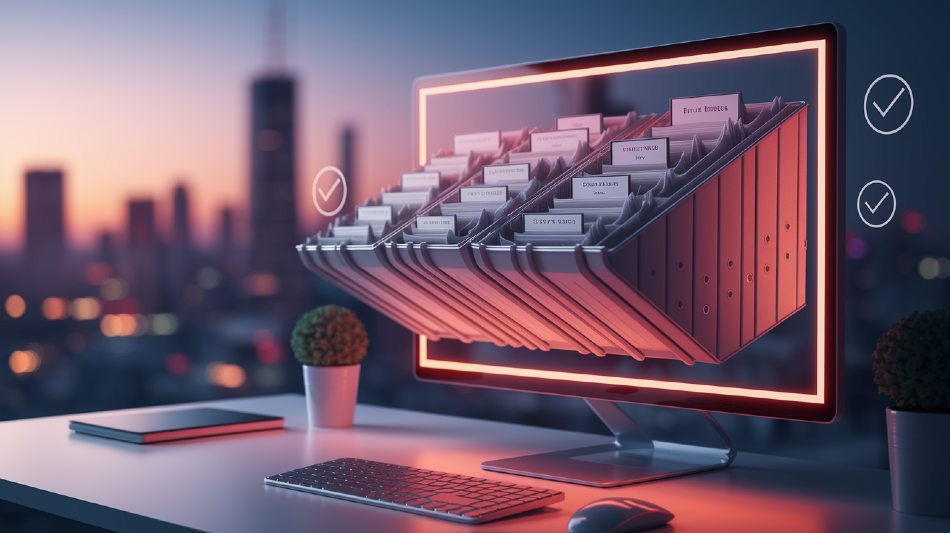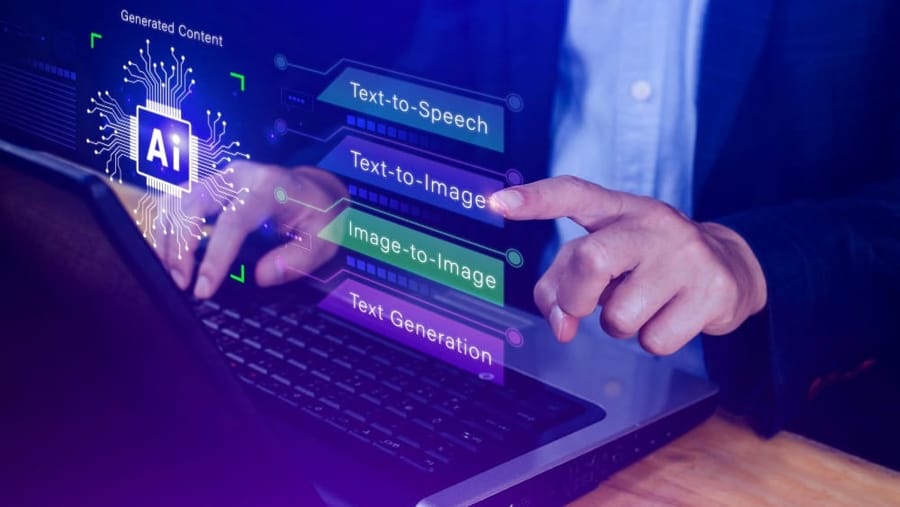Personal computers might seem complex, but they work in simple ways. They take the information you give them, process it using math, and show you the results. Think of your computer as a super-fast calculator that can handle many tasks at once.
Your computer works by using four main parts: input devices like keyboards, a processor that does calculations, memory that stores data, and output devices like screens that show you results. When you press a key or click your mouse, your computer turns that action into numbers it can understand. The processor then follows instructions to work with those numbers.
The digital age makes computers essential tools in daily life. You can write documents, watch videos, play games, or browse the internet. Your computer handles all these tasks by breaking them down into small calculations it can process quickly. The more you use your computer, the more natural these operations become.
Core Components of a PC
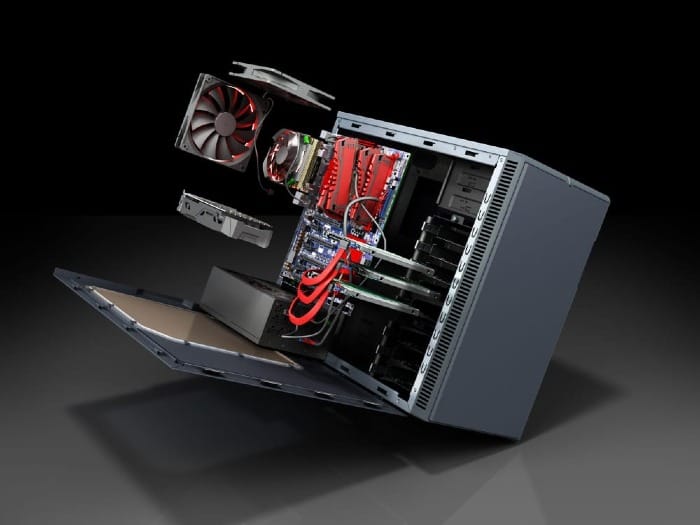
A personal computer needs several key parts working together to function. These components handle important jobs like processing data, storing files, and supplying power to the system.
Central Processing Unit (CPU)
The CPU acts as your computer's brain. It carries out instructions and performs calculations for every task you do on your PC.
Modern CPUs contain multiple cores that let them handle several tasks at once. A dual-core processor can work on two things simultaneously, while a quad-core can manage four.
Processing speed is measured in gigahertz (GHz). A 3.5 GHz CPU can perform 3.5 billion calculations per second.
The CPU generates heat while working, so it needs a fan or cooling system to prevent damage.
Motherboard
The motherboard connects all your computer's parts together. It's a large circuit board with slots and ports for other components.
Your CPU, RAM, and storage drives plug directly into the motherboard. It also has connections for:
- Power supply
- USB ports
- Network cards
- Graphics cards
Think of the motherboard as your PC's nervous system. It lets all the parts communicate and work as one unit.
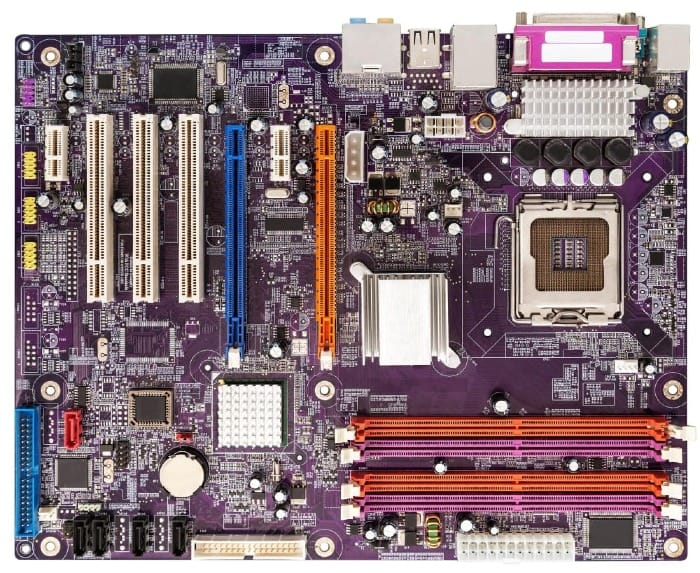
Memory (RAM)
RAM gives your computer quick access to active programs and files. More RAM means you can run more programs at once.
Common RAM amounts in modern PCs:
- 8GB: Good for basic tasks
- 16GB: Better for gaming and multitasking
- 32GB or more: Best for heavy workloads
RAM is temporary storage - it clears when you turn off your PC. That's why you need permanent storage devices too.
Storage Devices
Storage devices keep your files, programs, and operating system safe even when the power is off.
Hard Disk Drives (HDDs):
- Use spinning metal disks
- Offer large storage at lower costs
- Work slower than SSDs
Solid State Drives (SSDs):
- No moving parts
- Much faster than HDDs
- More expensive per gigabyte
Many PCs use both: an SSD for programs and an HDD for file storage.
Power Supply Unit (PSU)
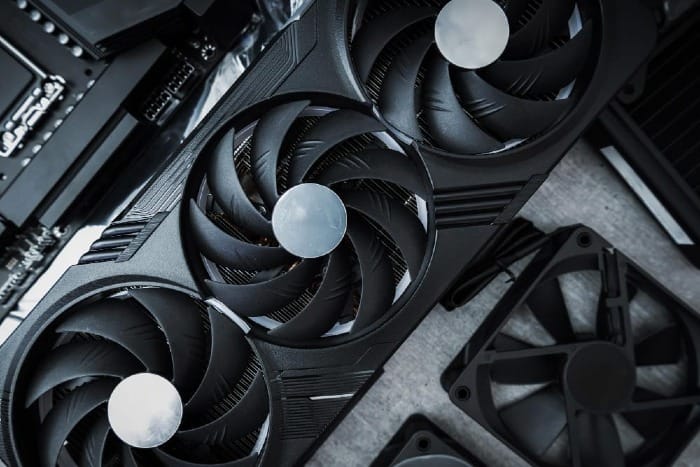
The PSU converts power from your wall outlet into forms your PC components can use.
A typical desktop PC needs a 400-750 watt PSU. Gaming PCs or workstations may need more power.
The PSU must provide stable power to prevent damage to other parts. Quality PSUs include safety features like:
- Surge protection
- Short circuit protection
- Temperature monitoring
Peripheral Devices and Input/Output
Peripheral devices connect to your computer and help you interact with it. These devices let you send information to your computer and get information back from it.
Input Devices
Your keyboard and mouse are the most common input devices. The keyboard lets you type letters, numbers, and commands. The mouse helps you point, click, and move items on the screen.
A microphone captures your voice for calls or recordings. Webcams take photos and video of you during online meetings.
Scanners turn paper documents into digital files. They work like a camera that copies text and images into your computer.
Touchscreens combine input and display functions. You can tap, swipe, and pinch directly on the screen to control your device.
Output Devices
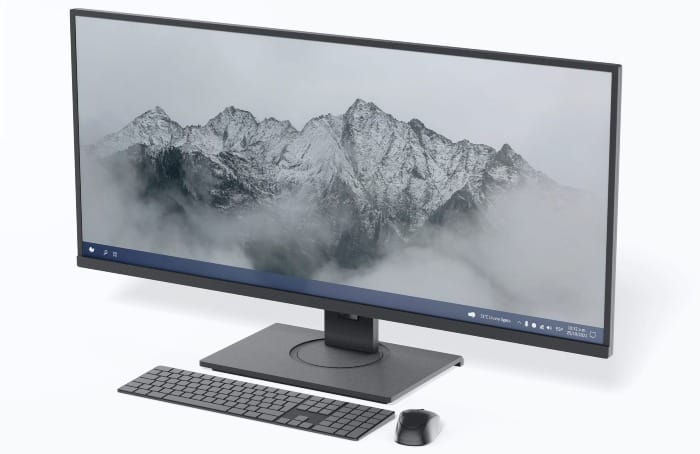
Your monitor displays text, images, and videos. Modern monitors use LCD or LED technology for clear, bright pictures.
Speakers and headphones play sound from your computer. They're essential for music, videos, and online calls.
Printers create paper copies of digital documents. Common types include:
- Inkjet printers for photos and color documents
- Laser printers for fast, high-quality text
- 3D printers for creating physical objects
External Devices
External hard drives provide extra storage space. They help you back up files and transfer data between computers.
USB flash drives are small, portable storage devices. You can easily carry files with you and plug them into any computer.
External DVD drives let you read and write discs. Many modern computers don't include built-in disc drives, so external ones are useful.
Network adapters connect your computer to the internet. They can be wireless (Wi-Fi) or wired (Ethernet).
Data Storage and Management
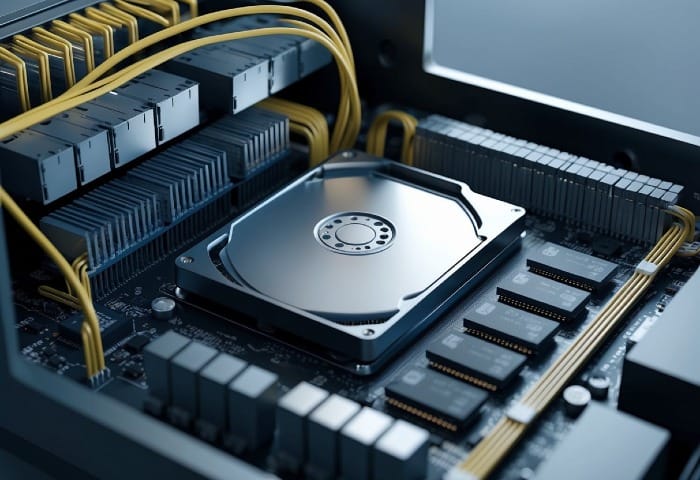
Your computer needs different types of storage to keep files, programs, and data safe and accessible. Modern storage solutions include both physical drives in your computer and online options in the cloud.
Internal Storage
Your computer has two main types of storage drives: Hard Disk Drives (HDD) and Solid State Drives (SSD). HDDs use magnetic disks to store data and are cheaper but slower.
SSDs have no moving parts and offer much faster data access speeds. They help your computer start up quickly and load programs faster.
Your storage drive holds your operating system, programs, and personal files. Think of it like a filing cabinet for all your digital items.
Most computers today come with 256GB to 1TB of storage space. You can add more storage by installing additional drives or using external devices.
Cloud Computing
Cloud storage lets you keep files on secure internet servers instead of your computer. Popular services like Google Drive and Dropbox give you free storage space to start.
Your files in the cloud are available on any device with internet access. This makes sharing and backing up files easy.
Cloud storage protects your data if your computer breaks down. Your files stay safe even if your device is lost or damaged.
Data Processing
Your computer processes data by moving it between storage and memory. When you open a file, it moves from storage to RAM for quick access.
Regular security scans check your stored files for viruses and problems. Set up automatic scans to keep your data safe.
Your computer uses temporary storage to handle tasks like editing documents or watching videos. This helps manage active programs efficiently.
Operating Systems and Software
Your computer needs special programs to control its hardware and run other software. These programs work together to make your computer useful and easy to use.
Understanding Operating Systems
An operating system acts as the main control center for your computer. It manages your hardware, runs your programs, and helps you interact with your device.
Windows, macOS, and Linux are the most common operating systems for personal computers. Windows runs on most PCs, while macOS is made for Apple computers. Linux is free and works on many different devices.
Your operating system handles important tasks like:
- Starting up and shutting down your computer
- Managing files and folders
- Controlling memory and processing power
- Running programs and apps
- Keeping your computer secure
Software Applications
Software applications are programs that help you complete specific tasks on your computer. These apps let you write documents, browse the internet, edit photos, play games, and more.
Most computers come with basic apps already installed. Your web browser, text editor, and media player are common examples.
You can download and install new apps from:
- App stores
- Company websites
- Software marketplaces
Programming and Development
Programs are created by developers who write special instructions called code. This code tells your computer exactly what to do.
Developers use different programming languages to create software. Each language has its own rules and uses, like Python for artificial intelligence or JavaScript for websites.
Making software requires careful planning and testing. Developers must:
- Write clear, efficient code
- Fix bugs and errors
- Update programs regularly
- Add new features
- Keep software secure
Networking and Communication

Your computer connects with other devices and the internet through various networks that share data and resources. These connections let you browse websites, send emails, and access shared files.
Computer Networks
Networks link computers and devices together to share information. Your home network connects your computer to other devices like printers and smartphones using a router.
Most home networks use Ethernet cables or Wi-Fi to connect devices. Ethernet provides fast, reliable connections through physical cables. Wi-Fi offers wireless convenience but may be slower than wired connections.
Your computer needs a network card to connect to networks. Modern computers have both Ethernet ports and Wi-Fi built in.
Internet and Connectivity
The internet is a massive network of connected computers across the world. Your home network connects to the Internet through an Internet Service Provider (ISP).
Your computer uses these key components for internet access:
- Router: Manages traffic between your network and the internet
- Modem: Connects your network to your ISP
- IP Address: A unique number that identifies your device online
Web browsers like Chrome or Firefox let you view websites. Email programs help you send and receive messages through internet servers.
Your internet speed depends on your ISP plan and connection type. Fiber and cable typically provide faster speeds than DSL or satellite connections.
Starting Up and Managing Your PC
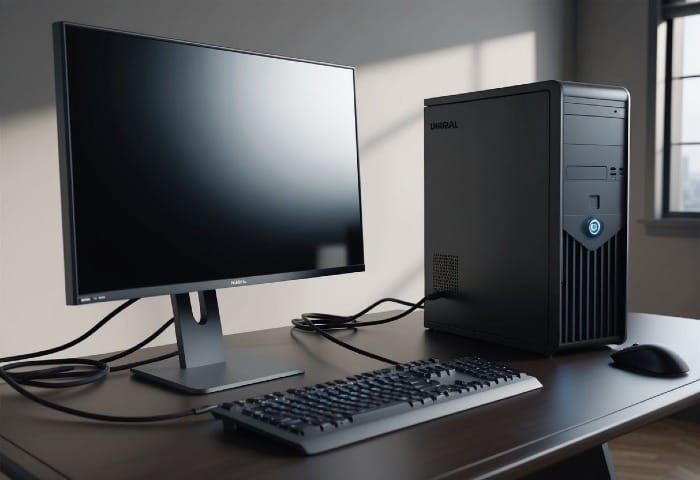
A personal computer needs proper startup, navigation skills, and regular maintenance to work well. Good habits keep your PC running smoothly and safely.
Booting Up Process
When you press the power button, your PC starts its boot sequence. The computer loads essential programs from the motherboard into memory.
Your operating system takes over after about 30-60 seconds. Windows, macOS, or Linux will load and show a login screen.
Type your password to access your desktop. Make sure to write down your password and keep it in a safe place.
User Interface and Navigation
Your desktop shows icons for programs and files. Click these icons with your mouse to open them.
The taskbar sits at the bottom of the screen. It displays open programs and important system icons like the clock and wifi status.
The Start Menu (Windows) or Apple Menu (Mac) holds your programs, settings, and search tools. Right-click items for more options.
Basic Mouse Controls:
- Left click: Select items
- Double click: Open files
- Right click: Show options menu
Computer Security and Maintenance
Install antivirus software to protect against harmful programs. Keep it updated at all times.
Run Windows Update or Software Update on Macs weekly. These fix security issues and add new features.
Monthly Maintenance Tasks:
- Delete unused programs
- Clear browser history
- Empty the recycle bin
- Run disk cleanup
Back up important files to an external drive or cloud storage. This protects your data if something goes wrong.
Restart your computer once a week to clear temporary files and refresh the system.
Conclusion
Personal computers are amazing tools that help you get things done. With just a few clicks, you can write documents, browse the web, play games, and connect with others.
The main parts, like the CPU, memory, and storage, work together to process your commands. Think of the CPU as the brain, memory as the workspace, and storage as the filing cabinet.
You now know the basic building blocks of how computers operate. This knowledge helps you use your computer better and fix simple problems when they come up.
Keep exploring and practicing with your computer. The more you use it, the more comfortable you'll become with its features and functions.
Remember that computers are tools meant to make your life easier. Take your time to learn at your own pace, and don't be afraid to try new things.
